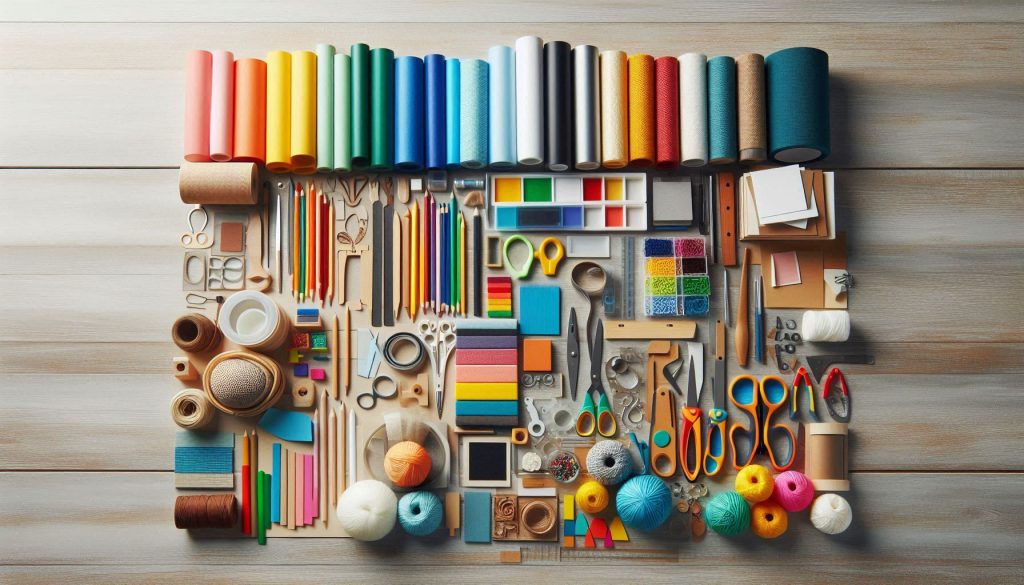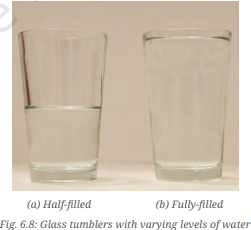Materials Around Us – Complete Guide For Class 6 Science Chapter 6

Welcome to iPrep, your Learning Super App. Our learning resources for the chapter, Materials Around Us in Science for Class 6th are designed to ensure that you grasp this concept with clarity and perfection. Whether studying for an upcoming exam or strengthening your concepts, our engaging animated videos, practice questions and notes offer you the best-integrated learning with interesting explanations and examples.
In this chapter, we will delve deeper into the fascinating world of materials. From the chair we sit on to the toys we play with, everything is made of materials that possess unique characteristics. Understanding these materials is crucial for recognizing how they interact with the environment and each other. We will explore various properties of materials, including their appearance, hardness, transparency, and solubility. By engaging in hands-on activities, students will learn to classify and identify materials based on these properties, enhancing their scientific inquiry skills. This exploration not only broadens our knowledge of science but also helps us appreciate the resources around us and their significance in our daily lives.
Introduction to Materials Around Us
Materials are all around us in different forms. From the chair we sit on to the pencil we write with, everything is made up of different materials like wood, plastic, glass, metal, etc. In this chapter, we will explore the properties of materials, how they are grouped, and their applications in everyday life.
Observing Objects Around Us
To begin with, let’s observe the objects we encounter daily. Think of the things you use, such as notebooks, pencils, and bottles. As stated in the chapter Materials Around Us, each of these objects is made from different materials, which gives them unique properties. Some are hard, others are soft; some are transparent, while others are opaque. These materials are the basic building blocks for all objects.
Activity: Identify the Materials
Look around and list the objects you see. For each object, identify the materials they are made of. For example, a notebook is made of paper, and a water bottle is made of plastic or metal. Here’s an example table to fill:
Object Material Notebook Paper Water Bottle Plastic or Metal Pen Plastic, Metal, Ink
How to Group Materials Around Us?

Grouping or classifying materials around us is important to understand their properties. For example, materials can be grouped based on their shape, size, color, texture, and hardness. Let’s try an activity to explore this further.
Activity: Grouping Objects Based on Properties
Look at various materials around us and classify them based on one property, such as hardness or color. For instance, objects like stones and metal are hard, while cloth and sponges are soft.
Object Property Group Stone Hard Hard materials Cloth Soft Soft materials
This method of grouping materials around us based on a common property is called classification. Materials can also be classified based on their appearance, texture, or feel.
Properties of Materials Around Us
Appearance of Materials
Materials Around Us Materials Around Us, Materials Around Us Class 6, Materials Around Us Science Chapter, Materials Around Us properties, Materials Around Us activities, Materials Around Us classification, Materials Around Us examples, Materials Around Us transparency, Materials Around Us hardness, Materials Around Us solubility, Class 6 Science materials, Properties of materials, Science Chapter 6 materials, Classification of materials, Materials in everyday life can look different from one another. For instance, metals like iron, copper, and aluminum have shiny or lustrous surfaces, while materials like wood and paper are dull and non-lustrous.
Hardness of Materials
Hardness is another important property. Materials like stones and metals are hard, while materials like rubber and sponges are soft. You can test the hardness of an object by trying to scratch it.
Activity: Observing Hardness and Softness
| Object | Hard/Soft | Material |
| Brick | Hard | Baked Clay |
| Pillow | Soft | Cloth, Cotton |
Transparency of Materials
Materials are also classified based on how much light they allow to pass through. They can be transparent (like glass), translucent (like frosted glass), or opaque (like wood). Transparent materials allow light to pass through clearly, while opaque materials block light completely.
Object Transparent/Translucent/Opaque Glass Transparent Frosted Glass Translucent Wooden Board Opaque
Solubility in Water
Materials can also be classified based on their solubility in water. Some materials like sugar and salt dissolve in water, while others like sand and sawdust do not. Some liquids can mix completely with water, while others do not and form a separate layer when undisturbed. Similarly, some gases dissolve in water, like oxygen, which is essential for the survival of aquatic plants and animals. Other gases, however, do not dissolve in water.
Activity: Testing Solubility
| Material | Prediction | Observation |
| Sugar | Will dissolve in water | Dissolved |
| Sand | Will not dissolve | Did not dissolve |
Heaviness and Lightness
The weight of a material is determined by its mass. For example, a metal object is heavier than a plastic object of the same size. This property helps in determining whether an object is heavy or light.
Space and Volume
Madam Vidya demonstrates the concept of volume using two identical tumblers and water. Even though the tumblers have the same capacity, the water levels differ, indicating different volumes of water in each tumbler. This shows that the space occupied by water represents its volume. Similar to how water bottles in the market display measurements like 1 L, 500 mL, and 200 mL, these quantities indicate the volume of water they contain. Through this activity, students learn that materials have various properties, but not all materials share the same properties.

What is Matter?
Anything that occupies space and has mass is called matter. Matter can exist in different forms, such as solid, liquid, or gas. The mass of an object gives the quantity of matter it contains, and its volume is the amount of space it occupies.
Classification of Materials in Ancient India
Classification systems have existed in India since ancient times. Ayurveda, for example, classifies materials based on properties like heaviness, smoothness, coldness, and heat. This classification helped people in ancient times understand the world around them.
Summary of Key Concepts
- Objects are made from various materials like wood, metal, and plastic.
- Materials are classified based on their properties like hardness, transparency, and solubility.
- Matter is anything that occupies space and has mass.
- Grouping materials helps us understand their uses in everyday life.
Learning Through Activities
- Identify and Classify Objects: Visit your kitchen and observe how items are grouped. Suggest a better sorting method based on their properties.
- Solubility Pairs: Test which materials dissolve in water and which do not by using vinegar, honey, mustard oil, and other household items.
- Create Recycled Objects: Using discarded materials, create and decorate an object and discuss its functionality with your friends.
By understanding the properties of materials, we gain insight into how things around us work, which helps in better utilization and conservation of resources.
Let’s Conclude
In conclusion, the Materials Around Us chapter is essential for understanding the diverse materials that make up our everyday lives. By exploring the properties of these materials around us such as their hardness, transparency, and solubility—we gain valuable insights into their applications and significance. This chapter encourages students to engage in activities that promote critical thinking and observation, reinforcing the importance of classifying materials based on their characteristics.
With the support of iPrep’s interactive resources, students can solidify their grasp of the Materials Around Us concepts from CBSE class 6 chapter 6, paving the way for a deeper understanding of the scientific principles that govern the world around them. Remember, every object we encounter is a lesson in the properties of materials, and by mastering this chapter, you are well-equipped to explore the fascinating world of science further. Dive into the Materials Around Us chapter and discover how these concepts connect to real-life situations, enhancing both your knowledge and your appreciation for the materials that surround us!
Practice questions on Chapter 6 - Materials Around Us
Get your free Chapter 6 - Materials Around Us practice quiz of 20+ questions & detailed solutions
Practice Now








